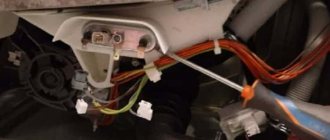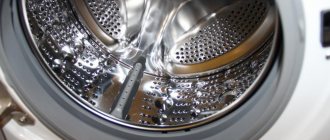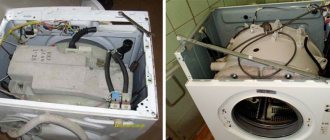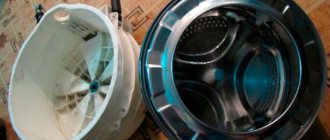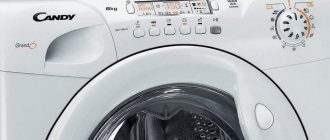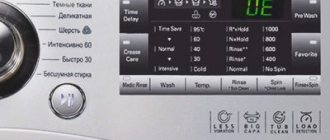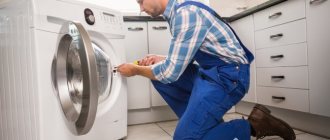The Bosch washing machine is a reliable appliance that is designed to last for a long time. But sometimes failures and breakdowns occur with it.
It is sometimes possible to cope with a problem on your own, but sometimes you cannot do without the help of a specialist.
Why the drum of the Bosch washing machine does not spin, what are the causes of operational problems, and how to fix them, we will tell you further.
Why doesn't it rotate?
Failure to rotate the drum during washing, spinning or rinsing almost always indicates the need for repair of a Bosch washing machine.
But sometimes the reason for stopping work can be user errors: foreign objects that got into the drum and stopped its movement or overload when loading things.
Among technical problems, the reason that the drum has stopped spinning may be the following factors:
- drive belt flying off;
- wear of motor brushes;
- problems with the control module;
- breakdown of the motor itself;
- a violation in the wiring inside the washing machine;
- failed tachometer;
- bearing wear.
Foreign body in the tank
Equipment repair technicians tirelessly talk about the danger caused by foreign solid objects that get into the washing machine tank. They tell how expensive repairs such a situation can turn out to be. Despite this, users often forget to check their pockets before loading items into the drum and neglect the recommendation to wash bras in special bags. Then, coins, pins, nails, paper clips, bones from bodices, and buttons get stuck between the tank and the drum.
It wouldn’t be so bad if the objects lay quietly at the bottom of the tank. However, sometimes they cause the drum to wedge and can cause damage to the plastic tank. In this case, you will have to replace the entire assembly, and this is a rather expensive repair.
If the drum is jammed for this reason, do not try to unscrew it manually or start the wash cycle
It is important to remove the stuck object from the washing machine tub as soon as possible. This can be done through the hole in the drain pipe or heating element.
If on your Beko model the heating element is located in the rear of the case, then it is better to get to the stuck small items in this way. It is necessary to remove the service hatch of the machine, disconnect the power supply from the heating element, loosen the fastening nut and pull the heater out. The resulting hole is enough to easily remove from the tank an object blocking the rotation of the drum.
When the heating element is in front, it is better to discard the idea of reaching a foreign object through its opening. This will involve removing the front panel of the case, which is quite difficult to do. It is much easier to try to remove stuck small things as follows:
- drain the water from the system through a garbage filter;
- lay the machine gun on its side;
- loosen the clamp securing the drain pipe, disconnect the hose from the tank;
- remove the foreign object through the drain hole.
After the problem is resolved, check the drum movement. If it rotates freely, you can assemble the Beko machine and continue to use the equipment.
Diagnostics
When diagnosing the condition of a Bosch device, it is advisable to start with simple, easily accessible components, gradually moving on to more complex ones.
If the washing machine displays an error code when it stops working, you should pay attention to this. Such information can narrow the search and specify the node that is failing .
If you notice at what stage of operation (washing, spinning) the device failed, this will further simplify the diagnostic task. In addition, it may turn out that the problem is not related to the drum at all.
For example, code F18 (E18) indicates a problem with the drain. In this case, the source of failure will not be the drum, but a violation of the waste water drainage. F19 indicates problems with water heating, etc.
Codes F21 (E21) indicate that the Bosch drum does not rotate. If this code appears from time to time, it may be due to contacts . This could be a faulty plug or electrical outlet.
If the Bosch drum does not move when running a program, you need to check whether it is able to spin without load. To do this, you need to try to swing it with your hand. If there is no movement, or it occurs with effort and squeaking, then most likely the culprit is a foreign object that has entered the tank. The solution to the problem is to partially disassemble the washing machine and remove the object that is interfering with the movement.
If the motor hums and the Bosch drum does not rotate, the problem may lie in the belt. Sparking from the motor, an inability to gain speed, or a complete stop of the cycle may indicate wear on the motor brushes.
If the elements of the Bosch control module, which are responsible for the movement of the drum or the motor itself, burn out, the washing machine can block the hatch door, draw in water, but then the process will stop . The same situation may indicate problems with the tachometer. To determine the cause for sure, you will need access to the nodes.
Bearings can also cause the drum to stop. But you can find out in advance that they are worn out - by the metallic noise as the drum rotates.
The equipment stops after taking in water
Let’s study the “symptoms” of the breakdown as carefully as possible. When you stop the washing machine at the very beginning, you need to check whether it has had time to fill with water. If you have time, then you should drain the liquid through the garbage filter and try to rotate the drum with your hands. If even with your hands the drum turns with difficulty or does not turn, it means that something is preventing the rotation and it is simply jammed. In this situation, we must keep in mind that it is possible:
- the belt came off the drum or broke, and then ended up on the pulley, which blocks the movement of the drum.
- some thing, which was probably previously in the pocket, ended up between the mechanisms.
- the bearing is damaged and does not perform its functions fully. This can happen due to significant loads on the washing machine, when loading an excessive amount of clothing, or if the oil seal was not properly lubricated (manufacturer’s defect).
Bosch washing machine repair
In the case where the problem has not been solved by simple methods, it is necessary to move on to analyzing the condition of the components, the malfunction of which may affect the lack of rotation of the drum.
Before starting work, which is carried out with the washer body open, de-energize the device and turn off the water supply to it.
Belt problem
In Bosch washing machines with a belt drive, it is possible for the belt to slip or slide off the pulley.
This part is designed to transmit torque from the motor to the drum pulley. This is what ensures its rotation. Access to the belt is from the rear wall of the washing machine .
The back panel must be removed. In normal condition, the belt should be tight, connecting the motor and the large pulley wheel located on the tank. When a part wears out, it is replaced with a new similar one. The cause of failure can be either excessively intensive operation of the washing machine or its prolonged downtime without operation.
If the belt has simply “flyed” out of its place, you can return it and continue using the machine. But if the problem persists, the part must be replaced. Read more here.
Motor brushes
Motor brushes are consumables that wear out during operation of a Bosch motor. These parts are involved in creating an electromagnetic field. Over many years of work, they physically wear out, decreasing in size. These parts cannot be repaired - they are replaced with new ones.
Physically, the motor is located under the tank of the Bosch washing machine. To carry out repair work, it is disconnected from the wires and the screws that hold it in the socket are removed. Read more here.
Replacing brushes - in the video:
Control module
The control unit is the brain center of the Bosch washing machine, which is responsible for the operation of all components of the device, coordinating them. If board elements burn out, repairs are necessary.
To remove the module you need:
- Remove the top cover of the washer.
- Pull out the powder receptacle.
- Remove the control panel.
- Disconnect all contacts of the block.
- Conduct board diagnostics.
- If malfunctions are identified, solder the tracks and replace broken radio elements.
Before removing the unit, it is advisable to photograph all connections. This will help in its installation after repair.
Motor failure
If, when the brushes wear out, they can be easily changed, then if the motor itself burns out, repairs are almost impossible . The burnt out engine is replaced with a new one.
Tachometer
If the drum rotation speed control sensor fails, the Bosch washing machine stops rotating it. The solution to the problem is to replace the part.
Bearings
Bearing wear occurs following oil seal wear . Water falling on metal elements leads to corrosion processes and, as a result, to the destruction of bearings.
Involved in the rotation of the drum, they lose functionality and the drum stops moving.
The solution to the problem is to replace the bearings. This is a complex procedure that requires complete disassembly of the washing machine, which is beyond the capabilities of beginners. Details are in this article.
Wiring
Wiring allows electrical signals to pass between nodes . If the contacts are broken or the wires themselves are damaged, such signals stop passing.
As a result, various failures are possible, including the Bosch drum not rotating. The solution to the problem is to inspect the wiring harness and terminals. If necessary, replace and carry out repair work.
How to fix a breakdown yourself
After carrying out the initial diagnosis and determining the reason why the drum stopped rotating, the motor is checked. If the brushes are faulty or worn out, they are removed and new ones are installed. To carry out this action, first remove the engine, replace the broken parts and put the engine in its original place.
To check the electric motor belts, remove the rear cover of the machine. If the belts come off or become twisted, they are returned to the desired position. If the belt breaks or is greatly stretched, purchase a new one and replace it.
If a foreign object enters the household appliance, it may begin to hum, knock, or rattle. If the interference cannot be removed, then remove the cover located at the back, and with it the heating element. After this, the foreign object is removed through the resulting hole.
Sometimes the electronic module gets damaged. In the event of such a malfunction, contact only a specialist who will reset it, reflash it, or completely replace it.
Call the master
In a situation where the Bosch washing machine does not rotate the drum, and you cannot cope on your own, you need to call a specialist.
It is better to call a specialist not privately, but officially - from a company that repairs washing machines. Such companies can be easily found on the Internet, giving preference to reliable ones with a good reputation.
The cost of repair work depends on its complexity. Prices can vary greatly by city and region. , you will have to spend the following amount on average to repair a Bosch washing machine
- bearing replacement – from 4,000 rubles;
- replacing the wiring harness - about 2000 rubles;
- drum pulley replacement – from 2,000 rubles;
- repair of the control board – from 3,000 rubles;
- replacement of the drive belt – from 1,000 rubles;
- get a foreign object - from 1,500 rubles;
- replacement of brushes – from 1800 rubles;
- motor replacement – from 2,000 rubles.
The cost of replacement parts is not included in the price of the work and is paid separately. After the repair, a guarantee is issued for the work performed. The duration of the warranty issued by the technician depends on the unit that was repaired.
Prevention measures
In order to avoid situations where the drum of a Bosch washing machine stops moving, it is advisable to take into account the following preventive measures:
Do not overload the drum when placing things.- Give the washing machine time to rest between wash cycles.
- If there are frequent power surges in the house, you need to take care of protecting the washing machine - install a stabilizer and connect the washing machine only through it.
- When repairing, it is recommended to use original, high-quality spare parts.


